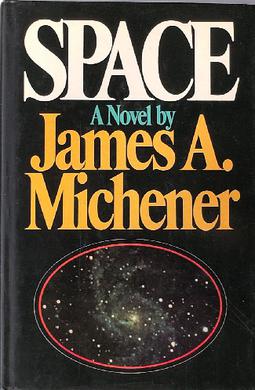See also
- Yuegong-1 (月宮一号), Lunar Palace 1 or Moon Palace 1, ecological life support system research facility in Beijing
Moon Palace is a 1989 novel by Paul Auster.
Moon Palace, Lunar Palace, Palace of the Moon, or variant may also refer to:
Ruth may refer to:

The Moon Is a Harsh Mistress is a 1966 science fiction novel by American writer Robert A. Heinlein about a lunar colony's revolt against absentee rule from Earth. The novel illustrates and discusses libertarian ideals. It is respected for its credible presentation of a comprehensively imagined future human society on both the Earth and the Moon.
Lunar most commonly means "of or relating to the Moon".
The Moon is Earth's only natural satellite.
Apollo 18 may refer to:

Earthlight is a science fiction novel by British writer Arthur C. Clarke, published in 1955. It is an expansion to novel length of a novella of the same name that he had published four years earlier.
Artemis is the ancient Greek goddess of the hunt, the wilderness, wild animals, the Moon, and chastity.

The "Great Moon Hoax", also known as the "Great Moon Hoax of 1835", was a series of six articles published in The Sun, a New York newspaper, beginning on August 25, 1835, about the supposed discovery of life and even civilization on the Moon. The discoveries were falsely attributed to Sir John Herschel, one of the best-known astronomers of that time.

Clavius is one of the largest crater formations on the Moon and the second largest crater on the visible near side. It is located in the rugged southern highlands of the Moon, to the south of the prominent ray crater Tycho. It is named for the Jesuit priest Christopher Clavius.
Hawke may refer to:

The Moon has appeared in fiction as a setting since at least classical antiquity. Throughout most of literary history, a significant portion of works depicting lunar voyages has been satirical in nature. From the late 1800s onwards, science fiction has successively focused largely on the themes of life on the Moon, first Moon landings, and lunar colonization.

Space is a novel by James A. Michener published in 1982. It is a fictionalized history of the United States space program, with a particular emphasis on human spaceflight.
Selene was the personification of the Moon in Greek mythology.
The Hollow Moon hypothesis and the closely related Spaceship Moon hypothesis propose that Earth's Moon is either wholly hollow or otherwise contains a substantial interior space. No scientific evidence exists to support the idea; seismic observations and other data collected since spacecraft began to orbit or land on the Moon indicate that it has a thin crust, extensive mantle and small, dense core, although overall it is much less dense than Earth.
Titania may refer to:
Moon Man or Moonman may refer to:
The Lunar Chronicles is a series of four young adult science fiction fantasy novels, a novella and a short story collection written by American author Marissa Meyer and published by Feiwel & Friends. Each book entails a science fictional twist on a classic fairy tale, including Cinderella, Little Red Riding Hood, Rapunzel, and Snow White. Set in a futuristic world inhabited by various species and creatures, tensions are rising between Earth and its former colony Luna, while both attempt to manage an ongoing pandemic. An animated feature film adaptation, to be produced by Locksmith Animation, was announced in 2019.
Fallen Moon or variation, may refer to:
Moonbase Alpha is a NASA computer simulation, simulator of a moonbase.